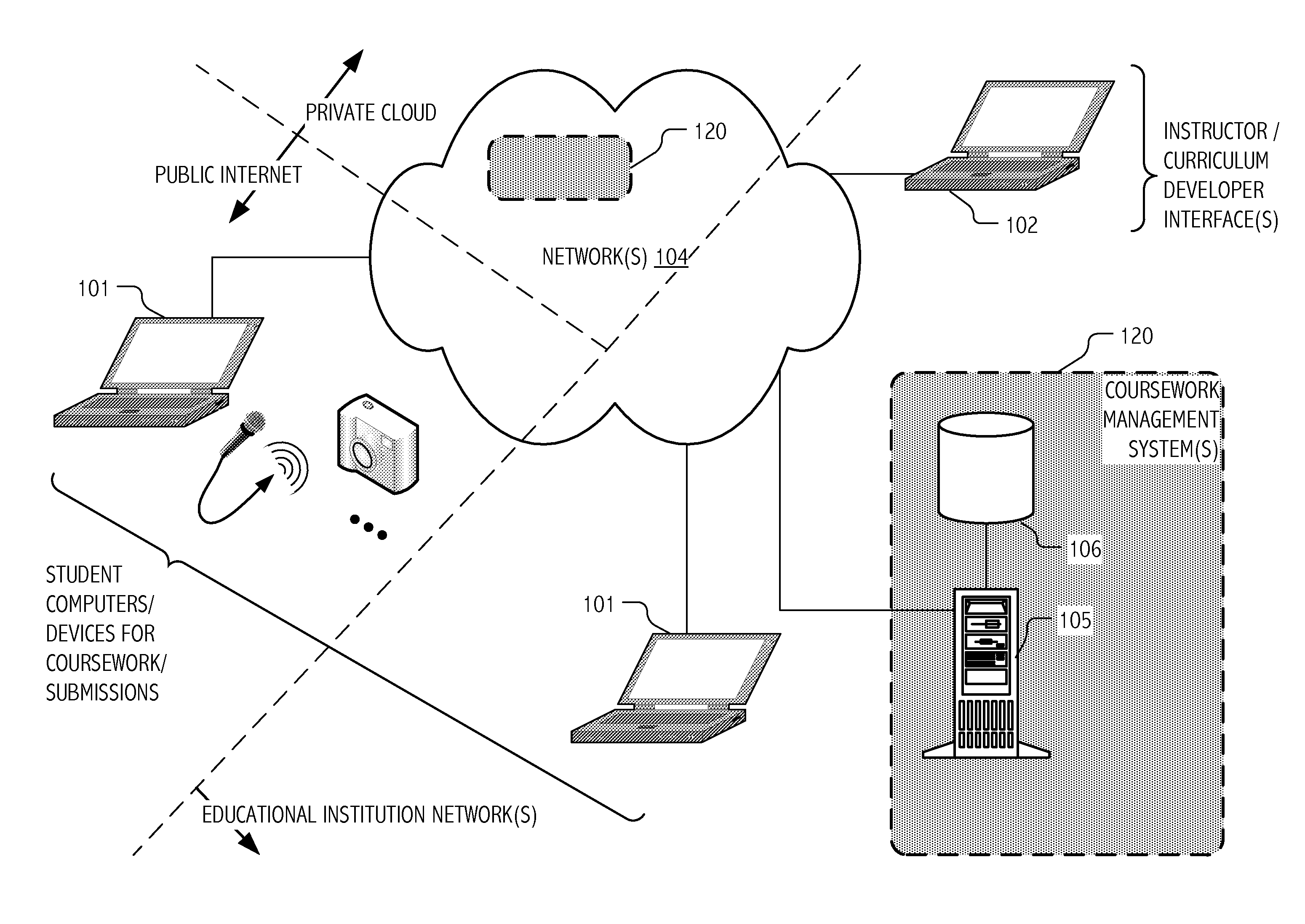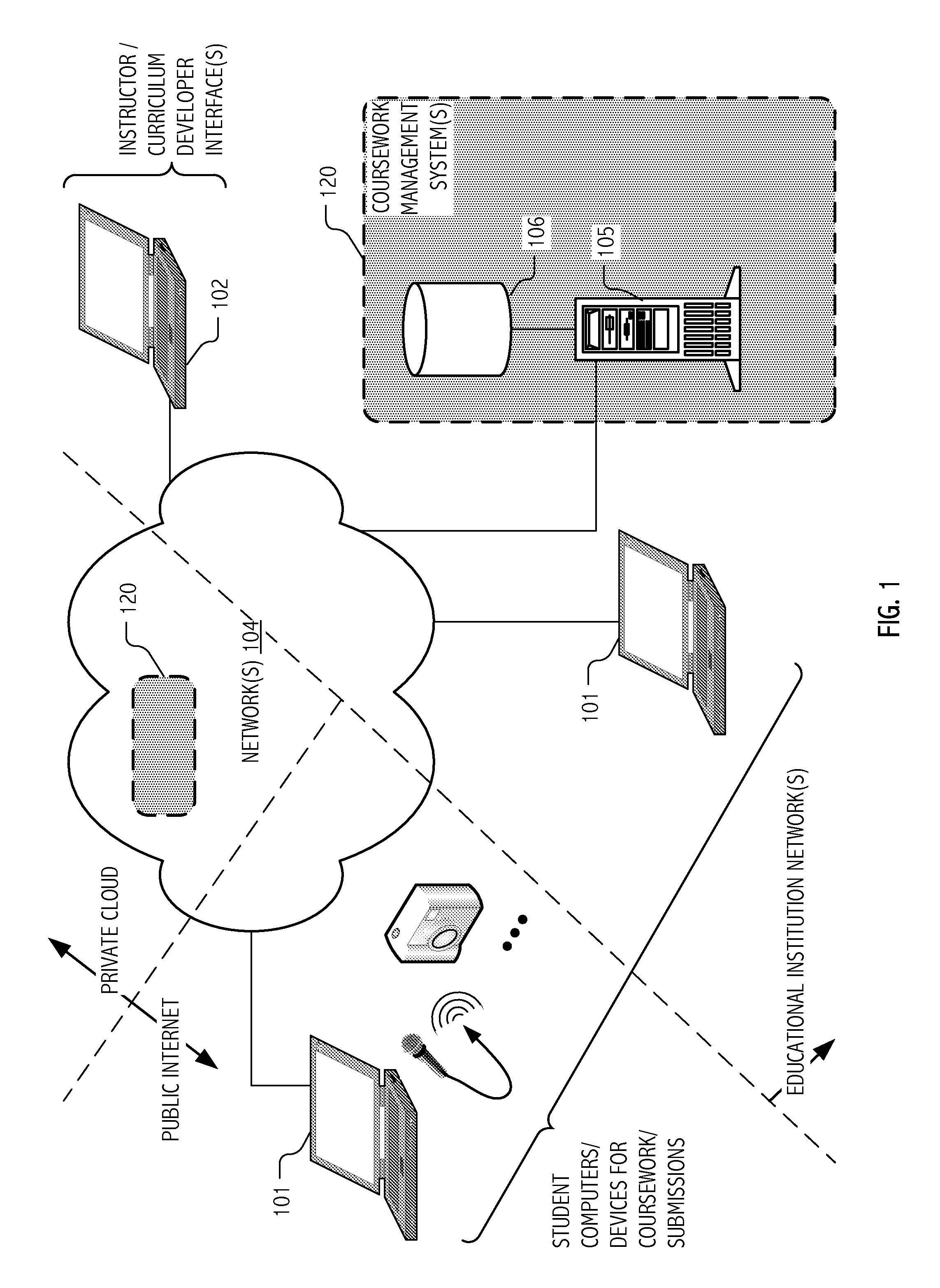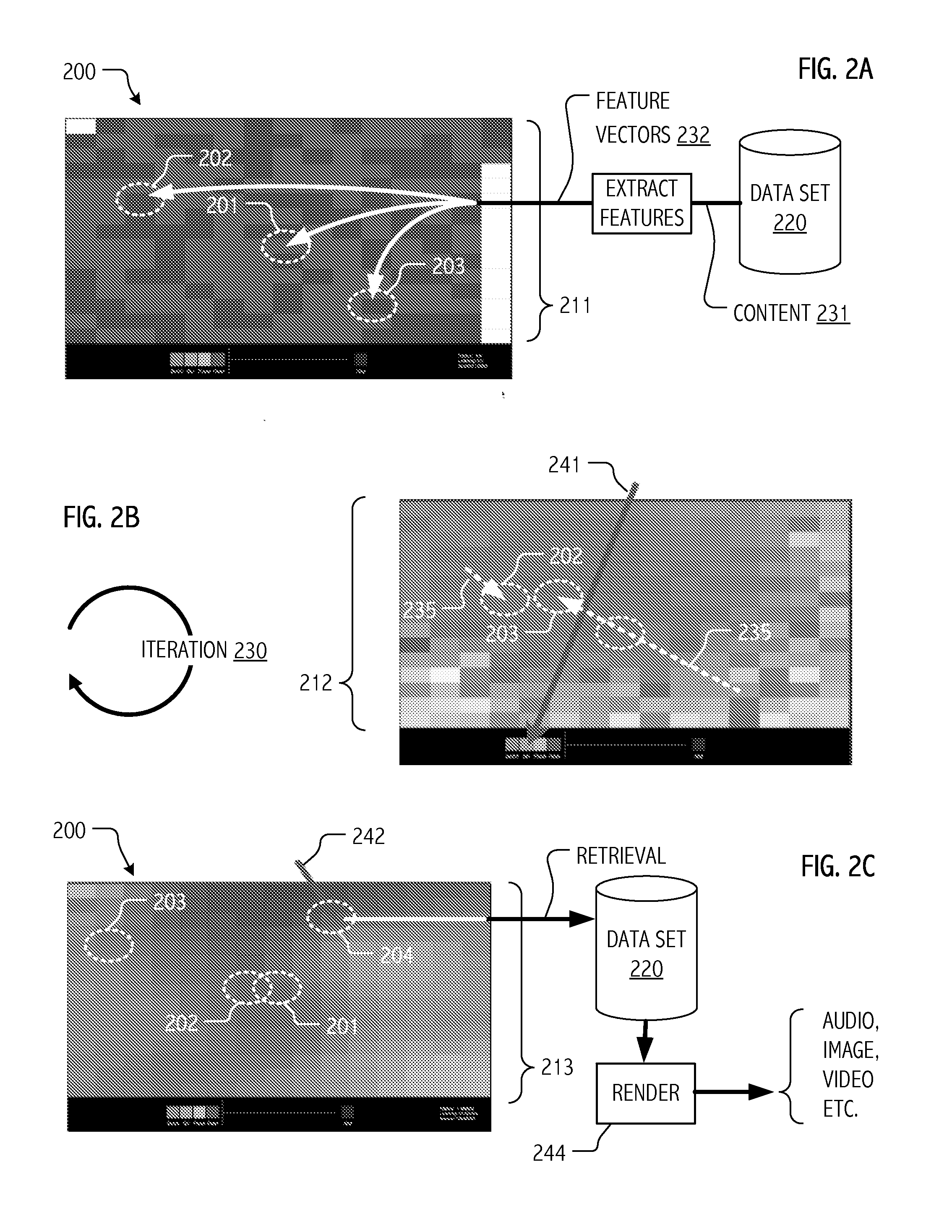Self Organizing Maps (SOMS) for Organizing, Categorizing, Browsing and/or Grading Large Collections of Assignments for Massive Online Education Systems
a massive online education system and assignment technology, applied in relational databases, teaching apparatus, instruments, etc., can solve the problems of many types of subject matter, unable to adapt to such assignments or examination formats, and conventional techniques for automatically evaluating and grading assignments are generally ill-suited to direct evaluation of coursework submitted in media-rich form, etc., to achieve efficient browsing and grouped
- Summary
- Abstract
- Description
- Claims
- Application Information
AI Technical Summary
Benefits of technology
Problems solved by technology
Method used
Image
Examples
Embodiment Construction
)
[0034]The computational techniques described herein address practical challenges associated with administration of educational courses or testing, including on-line courses offered for credit to large and geographically dispersed collections of students (e.g., over the Internet), using advanced feature extraction techniques combined with machine learning (ML) algorithms. The developed techniques are also applicable to browsing of media content, such as that that may be prepared and / or presented in the context of on-line courses or exhibitions. The developed techniques are particularly well-suited to educational or testing domains in which assignments or test problems call for expressive content, such as sound, music, photographic images, hand sketches, video (including videos of dance, acting, and other performances, computer animations, music videos, and artistic video productions). The developed techniques are also well-suited to educational or testing domains in which assignment...
PUM
 Login to View More
Login to View More Abstract
Description
Claims
Application Information
 Login to View More
Login to View More - R&D
- Intellectual Property
- Life Sciences
- Materials
- Tech Scout
- Unparalleled Data Quality
- Higher Quality Content
- 60% Fewer Hallucinations
Browse by: Latest US Patents, China's latest patents, Technical Efficacy Thesaurus, Application Domain, Technology Topic, Popular Technical Reports.
© 2025 PatSnap. All rights reserved.Legal|Privacy policy|Modern Slavery Act Transparency Statement|Sitemap|About US| Contact US: help@patsnap.com



